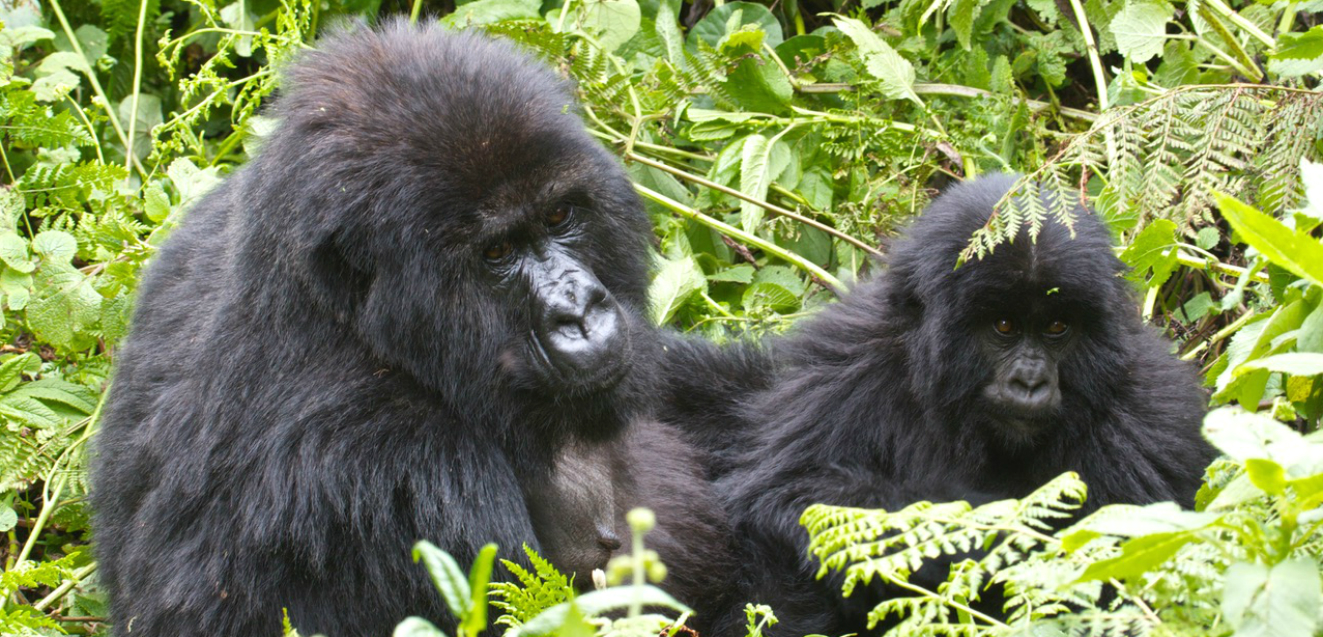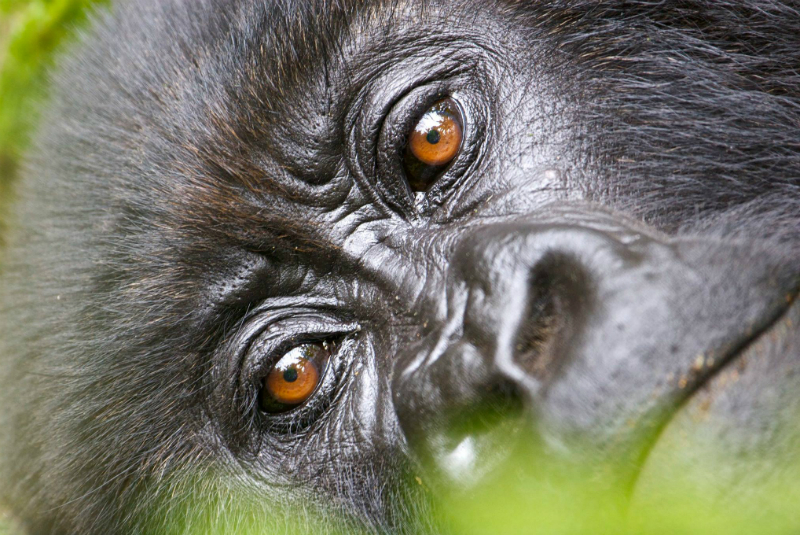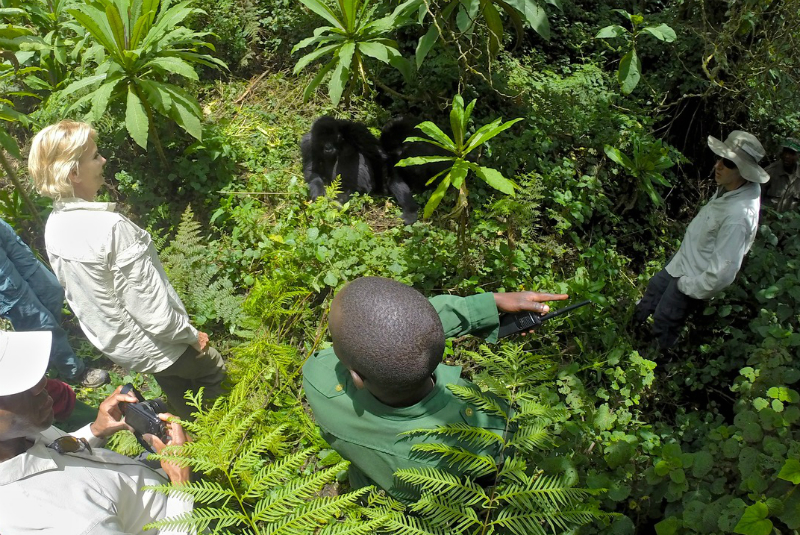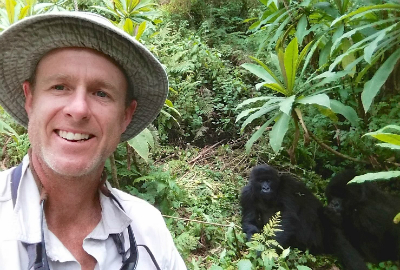Gorillas on the List

I will never forget the first time I laid my eyes on a mountain gorilla. It was at the top of my bucket list at the time, and I will never forget it for a few reasons:
1. I was in the Bwindi Impenetrable Forest National Park. Now that’s the coolest name ever for a park! Certainly when I was a young boy dreaming of the wild places in Africa that I had to visit, this place was right at the top of my list. A forest that was impenetrable … that will keep a small boy’s mind wondering for days.
2. I was living a dream, watching these big hairy near-humans go about their day in the wild, completely unperturbed by our presence.
3. I was in Uganda, a famous—or perhaps more accurately, infamous—country that until just a few years before my trip had been considered unsafe even to visit. I was trekking in the rain forest. I’d flown over rain forests before and stared longingly at what looked like endless fields of giant green cauliflower below, but I had never been in a large, extensive, and truly wild rain forest. Now I was in the middle of one!

I have seen the gorillas three more times since then, all on trips to Uganda’s smaller and historically even more turbulent neighbor, Rwanda. Seeing the gorillas has left me speculative and reflective for weeks afterwards. For not only are they on many a bucket list, they are also on another, less-appealing list: They are categorized as Critically Endangered on the IUCN (International Union for Conservation of Nature) Red Data list. This is the highest risk category assigned for wild species. The next two levels below Critically Endangered require no explanation: Extinct in the Wild, and then Extinct. Extinction is a horrific thought.

There are only about 880 mountain gorillas left in the world. The majority of these animals live on the slopes of volcanoes that straddle the borders of Rwanda, Uganda, and the Congo. Not only is the experience of gorilla trekking worth spending an hour (the maximum time per day that tourists are allowed to spend with the animals) exceptional and unique, it is truly humbling. I rate it as the most humbling wildlife experience in Africa.
![]()
It’s humbling to spend time with these gentle giants in their forest. It’s humbling to spend time with the men and women who are tasked with protecting the last wild families of these enigmatic beasts. These are the rangers, trackers, and researchers whose life work it is to ensure that the wild populations are there for our children to enjoy. It’s humbling to have a silverback, the dominant male of the group, stride peacefully past you. Weighing in at nearly 450 pounds, he could very easily not be peaceful. But he is.

It’s humbling to watch mothers cuddle youngsters, affectionately stroking their furry little ones’ heads with the same tenderness and love that we show our own children. It’s humbling to be stared at by a gorilla. They say that eyes are the window to your soul, and when a gorilla stares straight into your eyes, you feel a connection. An ancestral bond. Common ground. It is truly humbling.
So, if gorillas are on your bucket list, great. And if they are not, I think you should put them on now! And visit them as soon as you can. Let’s make sure they don’t end up at the wrong end of the Red Data list.
# # # # #
There are few wildlife hot spots in southern and East Africa that safari guide Lee Fuller has not explored. His infectious enthusiasm for Africa’s wild places, along with his passion for sharing intimate local knowledge, make him the perfect guide to the riches of Africa.

To learn more about the careful, respectful gorilla-tracking adventures that GeoEx can arrange, browse GeoEx Safaris or call our destination specialists at 888-570-7108.

